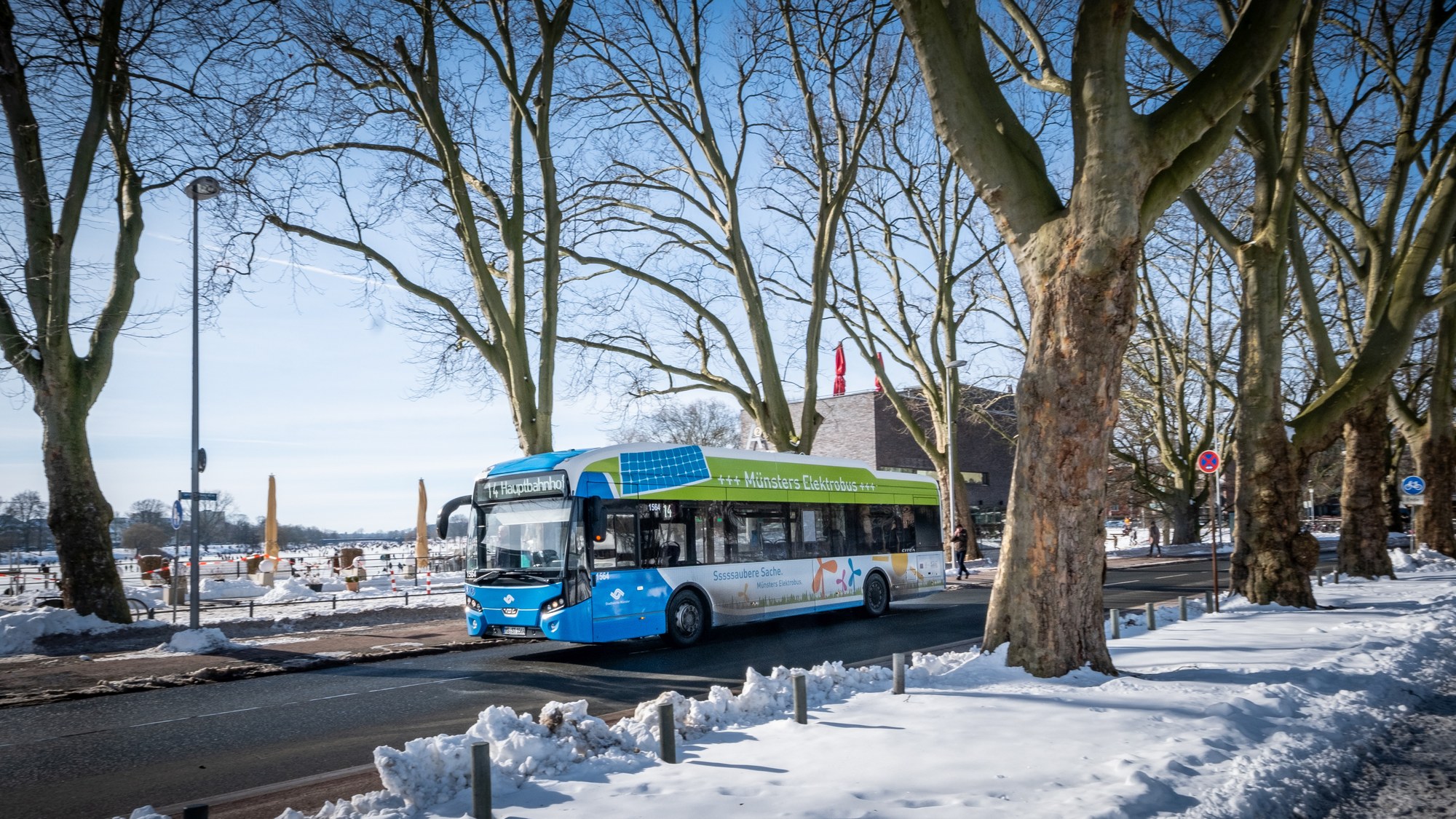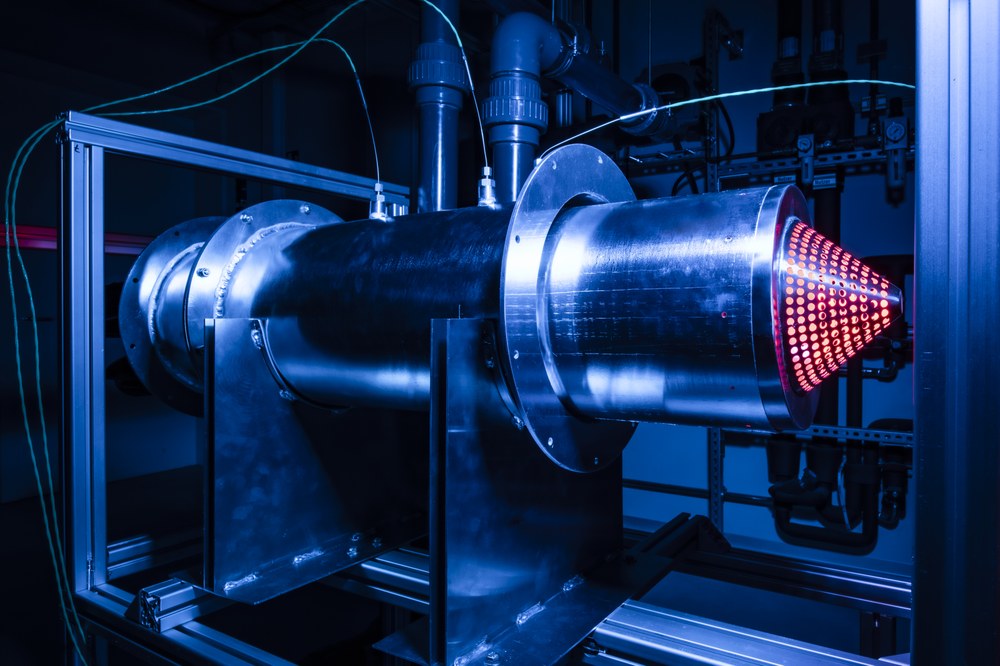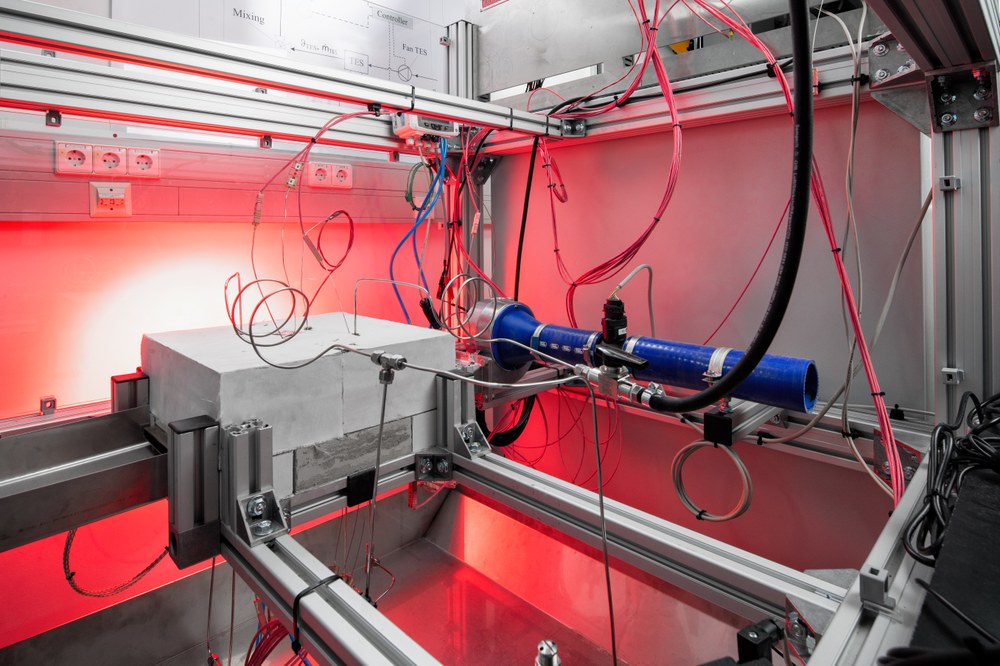Thermal storage systems for longer range

Stadtwerke Münster / Peter Leßmann
Who does not like feeling pleasantly warm in their car or on a bus in winter? But what if heating in electric cars and buses required almost as much electricity as it does to power the motor? Together with industry, DLR researchers have tested ceramic and metallic thermal storage systems as potential replacements for electrical heating systems. These thermal systems, like ovens, store heat for the journey even before setting off. As a result, a warm interior should no longer come at the expense of vehicle range.
In severe cold weather, heating electric cars and buses can require so much electricity that their range can be reduced by up to half. Buses consume a particularly large amount of heating energy due to their large windows and the frequent opening and shutting of the doors at stops. Thermal storage systems are a promising option that could be deployed instead of installing a larger vehicle battery for greater heating capacity. At the DLR in Stuttgart, experts from various institutes are conducting research into thermal storage systems that can store more energy than batteries of the same size and weight. Furthermore, thermal storage systems are more economical than batteries and their materials can potentially be easily recycled.

Like batteries, thermal storage systems can be designed to be modular and scalable, which makes it easy to implement different performance classes. This can prove especially worthwhile in local public transport systems and for large vehicles. For public buses, charging times for batteries and thermal storage systems could be planned in advance and coordinated with the timetables. DLR researchers worked together with industry to develop two technologies for high-performance thermal storage systems. In order to explore the advantages and disadvantages of both versions, they set up two demonstrators in laboratories and subjected them to extensive testing.
The Next-Generation Car (NGC) Project
The NGC project is aimed at developing and testing vehicle concepts for sustainable mobility. This also includes investigating solid-state and latent-heat storage systems for heating battery-electric vehicles. The DLR institutes of Engineering Thermodynamics, Vehicle Concepts and Materials Physics in Space were involved in the project.
Hot ceramics
The first of these is a ceramic thermal storage system that can reach temperatures of up to 900 degrees Celsius in its interior and was developed as part of the Next Generation Car project. "The materials and components are similar to those used for exhaust gas catalytic converters. The novelty is using them as a thermal storage system," says Stefan Zunft of the DLR Institute of Engineering Thermodynamics, who is overseeing the project. The heat is contained in a honeycombshaped ceramic structure comprising numerous millimetre-sized tubes. "Using a powerful electrical resistance heater, we can heat up the storage system in less than 20 minutes," says Zunft. A controlled airflow through the fine tubes is designed to transport the heat into the vehicle's interior. This allows the heating output and temperature to be adjusted as required while driving. In addition to heat output and storage capacity, size and weight are also key factors. The challenge is to make the storage as light and compact as possible, but this entails additional difficulties, such as higher heat losses.

The prototype achieved a heat output of over five kilowatts and was able to maintain a constant heating temperature of 70 degrees Celsius for five hours. The usable storage density for the entire system was 150 watt-hours per kilogram. "This makes the technology equally suitable for cars and buses," says Zunft. "It is also cost-effective and easy to operate."
About the LatHe.Go project
LeitmarktAgentur.NRW and the European Regional Development Fund (ERDF) are funding the LatHe.Go joint project on behalf of the state of North Rhine-Westphalia. The project is led by the DLR Institute of Materials Physics in Space in Cologne, with involvement from the DLR Institute of Vehicle Concepts in Stuttgart, TLK Energy and Access e.V.
Latent-heat storage systems – even more energy
In the LatHe.Go research project, researchers from the DLR institutes of Materials Physics in Space and Vehicle Concepts tested a latent-heat thermal storage system with a particularly high storage density.
A metal alloy consisting of aluminium and silicon serves as the storage medium. This is heated from 150 to 600 degrees Celsius, causing the metal to melt. The heat is referred to as 'latent' because some of the heating energy supplied appears to become hidden to crack the crystalline bondings between the metal atoms.
This acts as additional storage. Therefore, latent-heat thermal storage systems can absorb more energy than thermal storage systems that do not involve this melting process. When the alloy solidifies, the heat is released again. This process can be repeated as often as required. "Our current LatHe.Go demonstrator has a usable storage density of 143 watt-hours per kilogram, based on the weight of the entire storage system," says Werner Kraft of the Institute of Vehicle Concepts, who is one of the group leaders for the project. "However, the technology promises values of over 200 watt-hours per kilogram. A system suitable for minibuses requires no more than 10 kilowatts of heating power."
The LatHe.Go team is currently working on methods of bringing heat from the storage system into the vehicle interior via an airflow or coolant circuit. The researchers attach great importance to ensuring that the system is safe even in case of accidents. For example they are investigating the extent to which the melt escapes from the storage tank in the event of a leakage.

From simulation to test vehicle
The researchers are now testing possible application scenarios using computer simulations and conducting test runs in their laboratories using measurement data from DLR's transport research. Looking ahead, they are keen to further optimise storage capacities. Another area of focus is long-term stability. The researchers expect that the first thermal storage systems could be installed in vehicles by 2027. When this happens, even the coldest temperatures should no longer affect the range of electric vehicles.
An article by Jens Mende from the DLRmagazine 174
